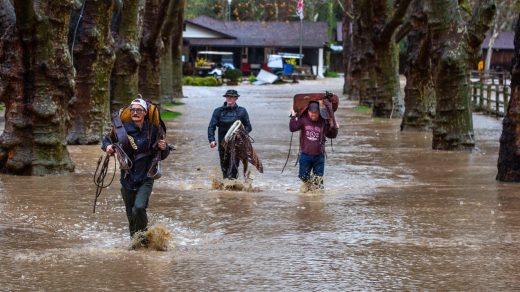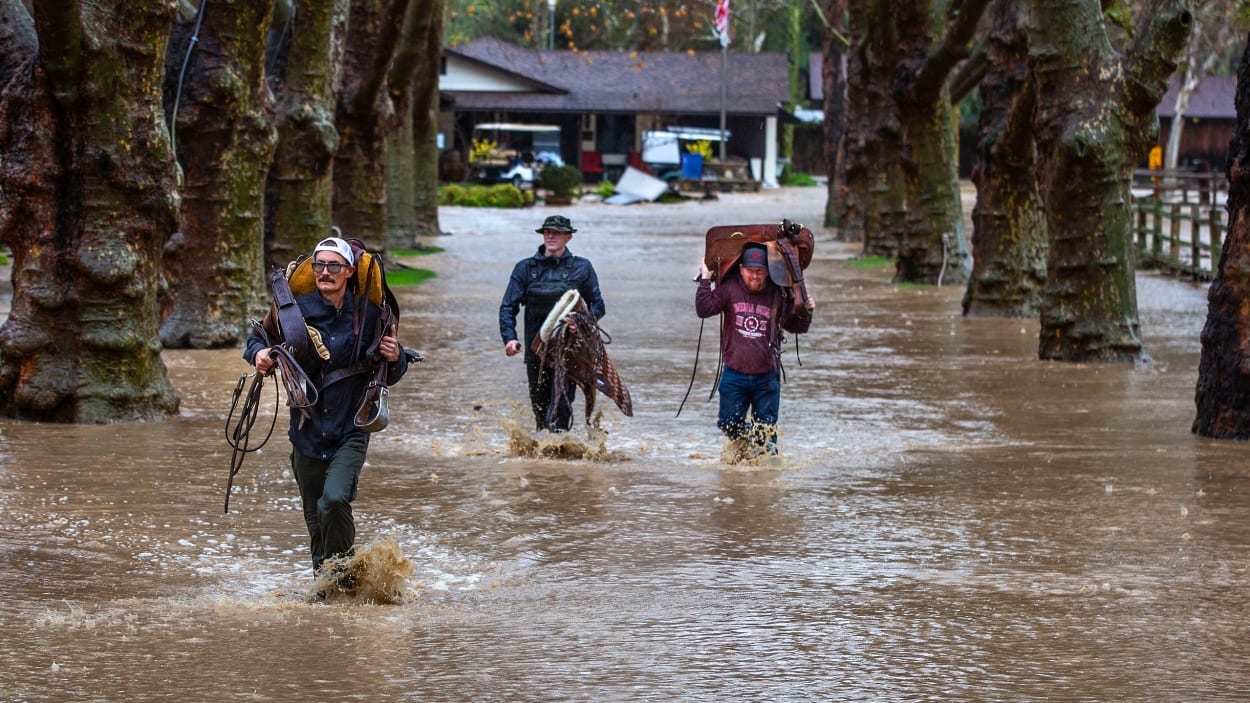Will the West Coast storms mean the end of California’s drought?
As a coastal state, California feels like a lush haven in the dry southwestern part of the country. But in reality, the golden state is becoming more like its arid neighbors as its water sources—like the underground aquifers and the Colorado River—are rapidly drying out, leaving the state in what feels like a never-ending drought. Aside from altering ecosystems across the state, California’s drought has led to inequitable water distribution and contributed to deadly wildfires. During the ongoing winter season, Californians are getting doused in some bittersweet relief, relentless rain.
Since mid-December, the state has experienced back-to-back rain storms so severe that it has caused casualties, canceled classes, and damaged infrastructure. On the bright side of these rainy days comes a bit of relief for the state suffering from water scarcity. While people are hopeful that this could mean for drought relief, experts caution that 2023 could be another hot and dry year overall. Some are skeptical about whether or not the influx of atmospheric rain can offer lasting relief. Here’s what we know:
Atmospheric Rivers
Similar to actual rivers, atmospheric rivers are water streams carried by clouds that dump massive amounts of rain, and while the state has experienced an endless stream, it hasn’t been felt equally across the state. According to David Novak, the director of the Weather Prediction Center (WPC), the state is still expecting a continuous flow of atmospheric rivers and torrential downpours. However, Californians can breathe a sigh of relief since the coming storms are anticipated to be less powerful than previous bomb cyclones that caused mudslides, flooding, and downed power lines and trees.
Reservoirs
While the barrage of rain storms has felt like California is no longer dry, reservoir levels are still below average for this time of year. The reservoirs are not only a source of drinking water for millions living along the coast, but they help irrigate the farmland, which supplies over a third of the country’s vegetables and three-quarters of the country’s fruits and nuts. According to WPC, the wet ground is reaching its capacity to absorb more water, which has led to subsequent flooding in areas like Sacramento.
Snowpacks
Snowpacks serve as a water bank, storing moisture for the long haul, slowly trickling back down the mountains in drier months. But due to climate change, snowy mountain tops haven’t offered much reinforcement in years since summers in California are longer and warmer. However, this winter season, the mountains could grant serious surplus; according to the California Department of Water Resources, snowpacks in the Central and Southern Sierra mountain ranges are more than 200% above average for this time.
Climate scientists suggest that updating existing infrastructure, like pushing back levees, will allow rivers to flood more safely, and building new infrastructure will increase water collection. In Los Angeles, the pending stormwater capture system is expected to collect 98 billion gallons of water annually rather than flowing into the Pacific, a potentially life-changing improvement for a region that imports 60% of its water.
(31)



